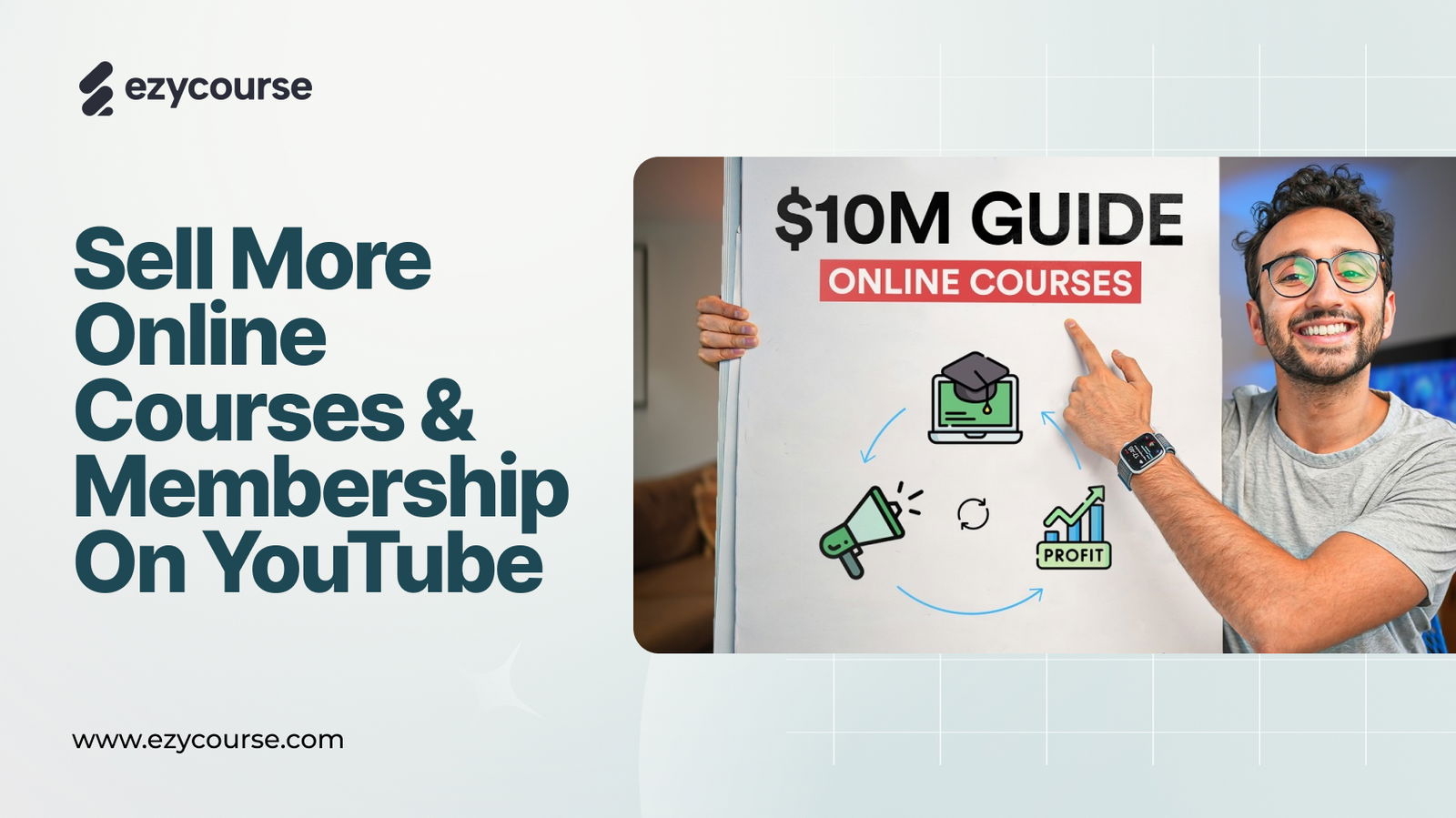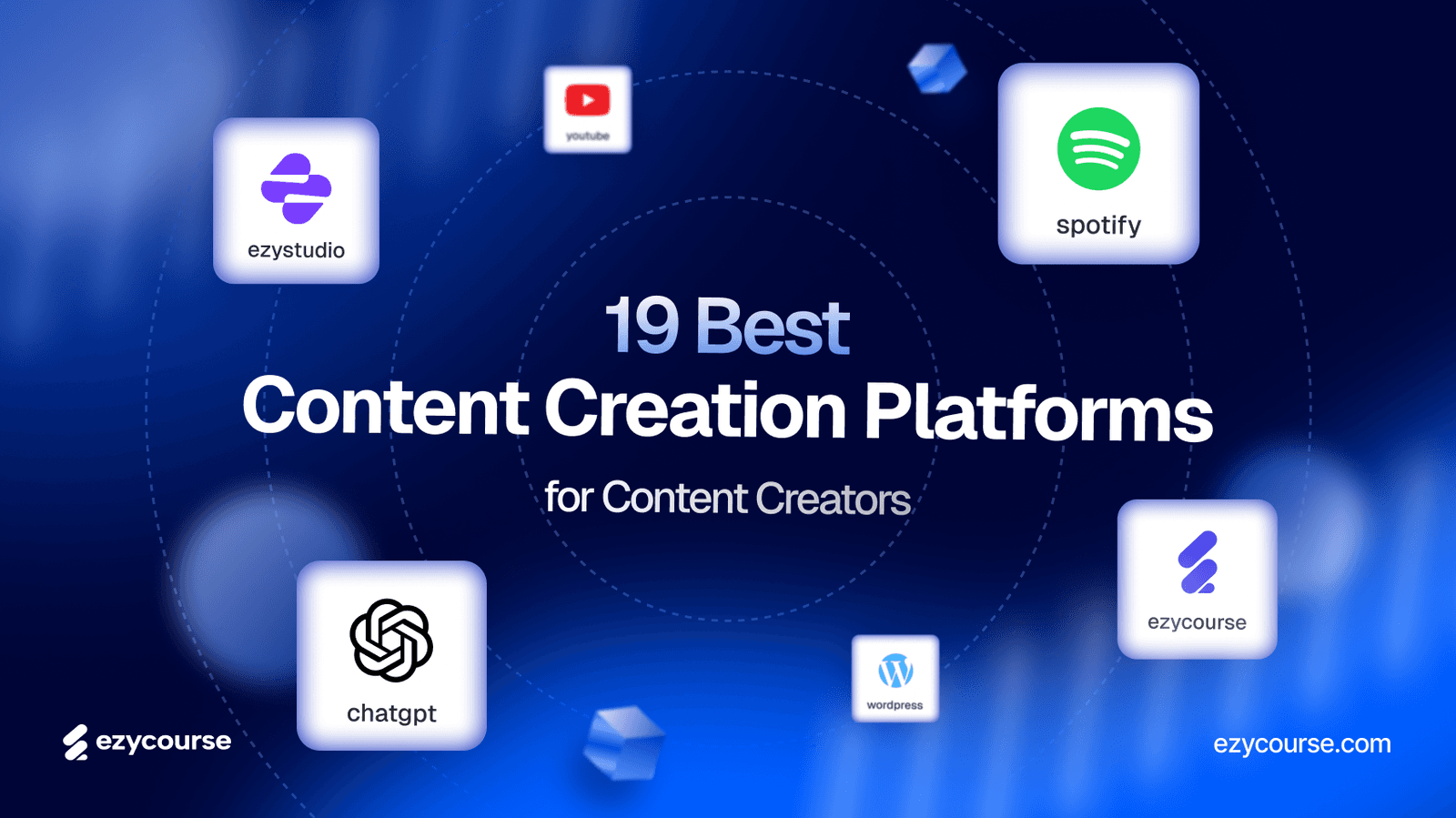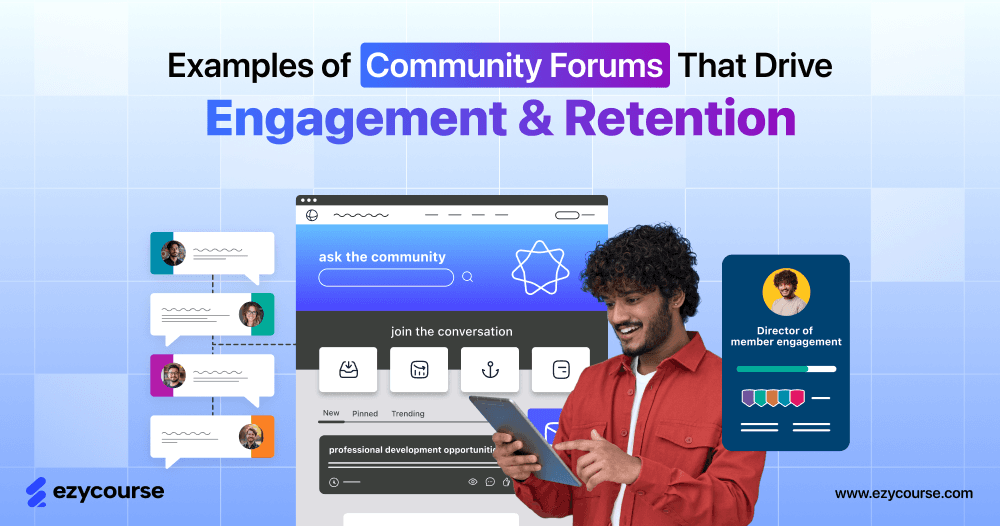Globally, YouTube has more than 2.5 billion active users on a monthly basis. It is the second-largest social network after Facebook.
That's a huge pool of potential students, right? You might be eager to start selling your online courses directly on YouTube. But slow down; we will properly guide you on how to sell on YouTube.
While YouTube has an enormous reach, it's not yet built to sell courses outright. First, you must meet strict monetization guidelines: at least 4,000 valid public watch hours and 1,000 subscribers in the past 12 months.
Even then, there's no way to block people from sharing the course link once it's posted. That would immediately cut off your earnings.
The good news is that YouTube plans to introduce features designed to help educators sell content. These updates include a dedicated YouTube player for education, a Community feature, and Quizzes.
Until that launch, YouTube remains a fantastic way to get your course in front of more viewers. You can still stand out on the platform and use it as a powerful marketing tool for your teaching business. We'll explore that next.
Why YouTube Excels at Selling Courses in 2025?
YouTube brings powerful benefits to anyone who offers online courses. With billions of monthly users, you can reach a massive global audience. Here's why it deserves a spot in your course strategy this year:
1. Reach More People
Some wonder if YouTube is necessary for marketing online courses. The short answer is yes. YouTube's huge user base can uplift awareness of your classes when you post clear, helpful videos. If your content resonates, viewers share it.
That exposure can grow your course brand, especially once you weave your core visuals and messaging into each video.
2. Grow Your Email List
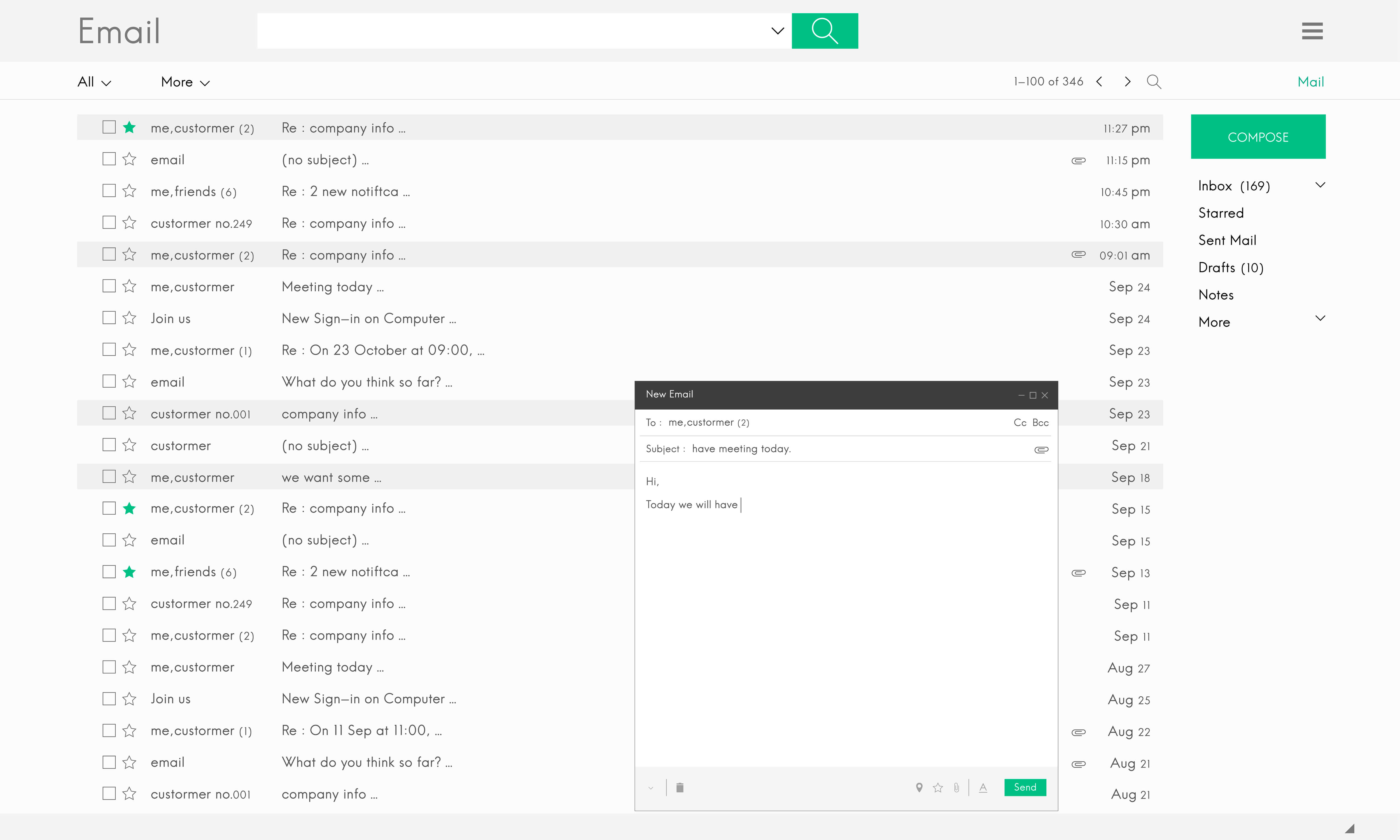
YouTube also supports lead generation. Ask your viewers to fill out a quick form for a course discount or a free resource.
Share direct download links in the description so viewers can claim extra materials. This helps collect their emails, turning them from casual viewers into potential students.
3. Earn Extra Income
Another perk is monetization. YouTube lets qualifying creators run ads or unlock paid features once they have 1,000 subscribers and 4,000 public watch hours in 12 months.
This adds a new income stream while you keep promoting your courses. Meeting the threshold may take time, but it can open extra earning possibilities.
4. Boost Search Visibility
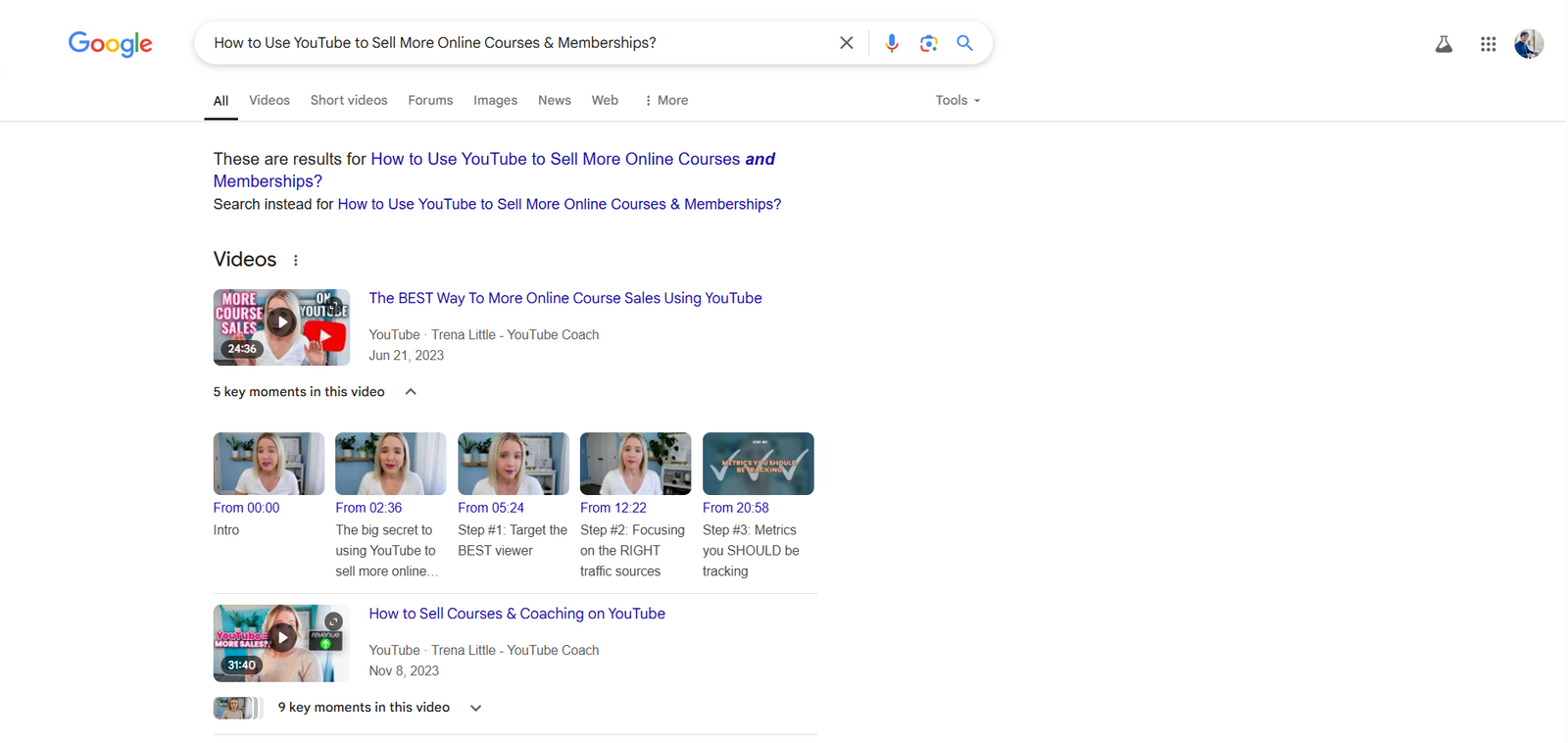
YouTube videos often show up near the top of Google results. By optimizing your online course videos with relevant keywords, you can attract people who search on Google as well.
Embedding these videos into your teaching site also raises your online profile. This increases credibility and can direct even more learners to your courses.

What Are the Essentials for Selling Online Courses on YouTube?
Create your YouTube channel using a Google account. Keep the channel branding consistent with your business identity so that viewers recognize you.
Upload videos and group them into playlists. Talk to your viewers in the comments to build a community. Aim for high-quality videos to stand out.
However, the essentials for selling online courses on Youtube are:
Camera: Shoot in 4K if possible. If not, 1080p on most smartphones still works well.
Lighting: Natural light is great. For a more professional look, add a ring light or panel light—especially for talking-head videos.
Audio: Clear sound matters more than anything. An affordable external microphone is better than a built-in camera mic.
Editing: Use software like Final Cut Pro, Adobe Premiere, or DaVinci Resolve. Trim and merge clips for a smooth final video.
Payment Methods: Decide how you'll collect payments. Link to landing pages or your website so customers can buy from you.
A Standalone Course Platform: Using a dedicated course platform like EzyCourse, you can create a personalized environment for your students and manage all the stuff related to your courses easily from one single platform.
How to Make Online Course Videos That Convert?

Growing engagement on YouTube often leads to more views and higher sales courses. Here's how you can create videos that actually sell:
Know your audience. Pinpoint who you're talking to. Consider age, location, and interests to match your content with their needs.
Plan your content. Choose your video formats, posting schedule, and main theme.
Use catchy titles and descriptions. Include strong keywords that grab attention. Make it clear what viewers will learn or see.
Focus on production quality. Bright lighting, clear audio, and clean graphics go a long way. Better visuals and sound keep people watching.
Add clear calls to action. Encourage viewers to visit your site or buy a product. Place CTAs early and late in your videos.
Be honest and open. Authenticity builds trust. If there's any bias or conflict, let people know upfront.
Following these steps can help your channel attract more viewers and turn them into paying customers.

How to Sell on YouTube: 17 Effective Ways
Now, we will explain how to sell your online courses & memberships on YouTube:
1. Highlight Your Online Course in Videos
Showcasing what you sell through dedicated videos is one of the most powerful methods to increase sales on YouTube. Course creators can film their course demonstrations, tutorials, or any format that helps viewers see the value of your items or services.
Reviews are another great approach, especially if people already know your brand and want more details before buying. Keep it honest, and let your course's benefits shine without pushing too hard. Audiences appreciate an authentic approach.
2. Create a Sneak Peek Video
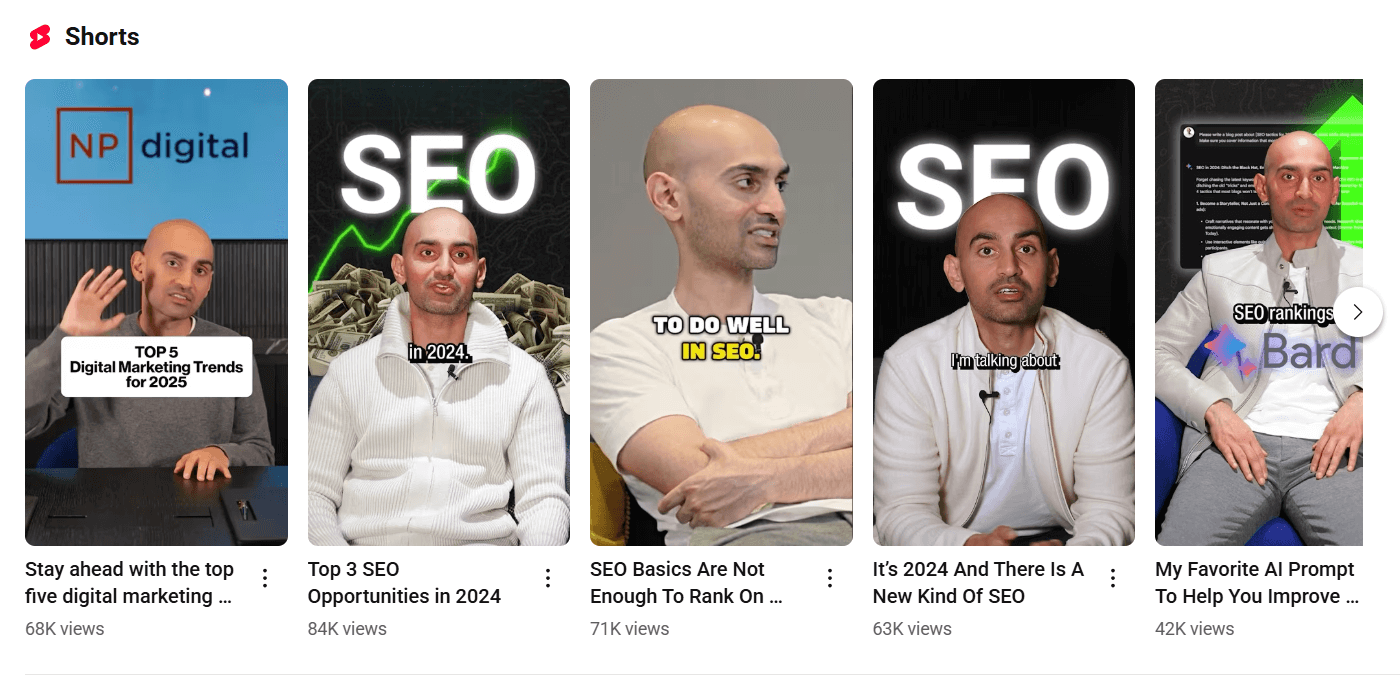
People won't buy if they don't know what they're getting. Show them a glimpse of your course. Make a short, free video sharing a valuable tip or an engaging tutorial. Keep it functional and exciting.
Introduce yourself briefly in the video. This builds trust and makes your content more personal. Confidence is key—show that you know your topic well.
3. Share Valuable Content
Don't just promote your course—help people. Your YouTube channel should offer useful advice, not just sales pitches. Post engaging videos packed with value.
If your course is about copywriting, share tips on finding clients, writing better copy, or avoiding common mistakes. To build trust, you can also give away free resources like checklists or eBooks.
4. Turn On YouTube Shopping
If your channel meets the 1,000-subscriber threshold and has 4,000 watch hours in the past year, you can access YouTube Shopping. It's part of the YouTube Partner Program, allowing you to present products directly in your videos.
Being able to link items right on your video page, sidebars, or end screens sets you apart from competitors who don't qualify. To enable this feature:
Sign in to your YouTube account.
Go to Monetization in the left menu.
If eligible, click the Shopping tab.
Connect your store and pick which products (online courses) to list.
YouTube will review and approve your items.
Once your courses are approved, you can manage them at any time. Note that all new items must also undergo a review before they go live.
5. Put Links in Your Video Descriptions
Adding direct links to your product pages or online store in the description is a simple way to lead viewers to make a purchase. It lets you generate immediate traffic.
You can make links more attractive using a URL shortener like Bit.ly or TinyURL, which helps you measure clicks. You can use EzyCourse to build a customized checkout on your site. Customers can make payments using a credit card, debit card, or other method of their convenience.
6. Invest in YouTube Ads

Building up a subscriber list organically can take time. If you want faster results, consider YouTube ads. Setting them up through Google Ads lets you guide viewers to your channel or external pages for selling digital products.
These ad formats include:
In-feed ads: Often called discovery ads, they show up in search results, under related videos, or on home pages. A click can send users to a featured YouTube video or another webpage.
Skippable in-stream ads: These Ads run before or during a video. Viewers can skip the ad after a brief moment, typically around 15 seconds. However, you pay when viewers watch at least 30 seconds or interact in some way.
Non-skippable in-stream ads: Viewers can't skip these types of ads, and they last between 15–20 seconds. You're billed based on every 1,000 views (CPM).
Bumper ads: These are only six seconds long and can't be skipped. They usually serve as part of a larger ad campaign and are also priced per 1,000 views.
Overlay ads: These are smaller banner-style graphics that pop up at the bottom of videos. They differ from the others because they aren't video-based.
7. Partner with Influencers
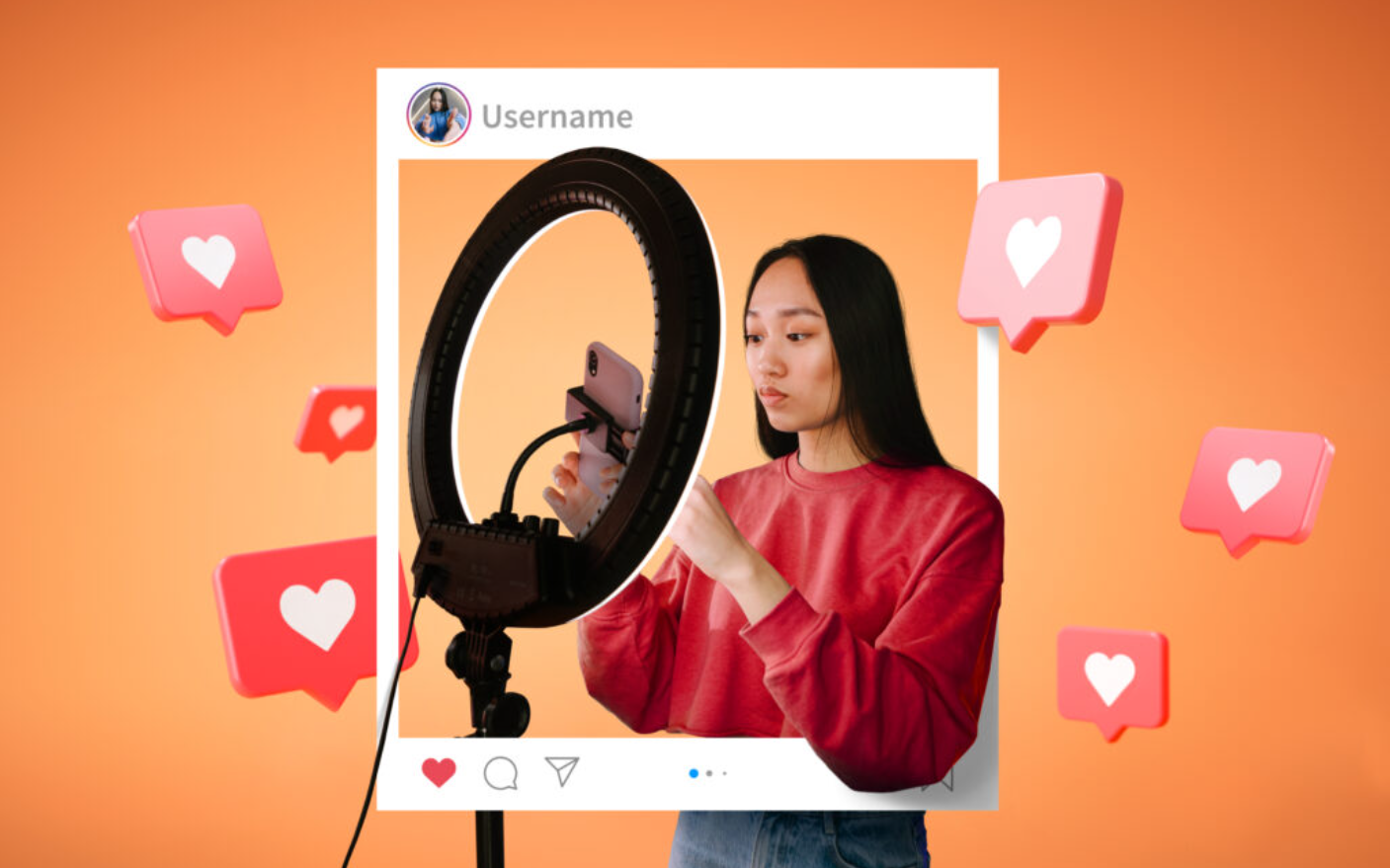
Ads can work well. However, not everyone likes them, and many people use ad blockers. Another strategy is teaming up with established YouTubers or collaborating with similar brands.
Sponsorship deals are a common setup: you pay a creator to mention your online courses or include them briefly in their video. You could also form a longer-term alliance where they produce full online course reviews or highlight your brand in multiple uploads.
Joint videos with other brands let you cross-promote to both audiences, increasing your reach with minimal extra effort.
8. Place Links on Your Channel Banner
YouTube allows you to add up to five links on your channel banner. By adding links, you can drive traffic to your online course site or social media platforms like Instagram or Twitter.
To add these links:
Go to the Basic Info tab on your customized channel page.
Scroll down to Add link and type the URL.
In the Link Title, name the link (e.g., "Visit Our Store").
Click Publish.
When you mention popular sites like "Instagram" or "Facebook," YouTube automatically replaces the text with the site's icon.
9. Use Keywords to Improve Visibility
YouTube's algorithm acts like a search engine. It recommends videos based on relevance and keyword usage. By choosing the right keywords, you can help YouTube understand your content and show it to the right viewers.
Optimize your course titles to match what your video covers. Write thorough descriptions, use relevant tags, and enable closed captions. Including keywords in annotations, if you use them, also helps.
After optimizing, watch your channel analytics to see how well your videos rank. Adjust if you notice specific keywords aren't driving views.
10. Include Cards That Link to Your Store
YouTube Cards are those pop-ups that appear while a video is playing or when it ends. They're a straightforward way to guide viewers to your product pages without making them scroll or leave the video.
If you don't have your own website, you can still sell and host your courses on EzyCourse. We offer a Pay Link that sends buyers to a custom checkout page. Visitors can then select their preferred payment method. Cards make it easy for them to see this link at just the right moment.

11. Add a Clear Call to Action
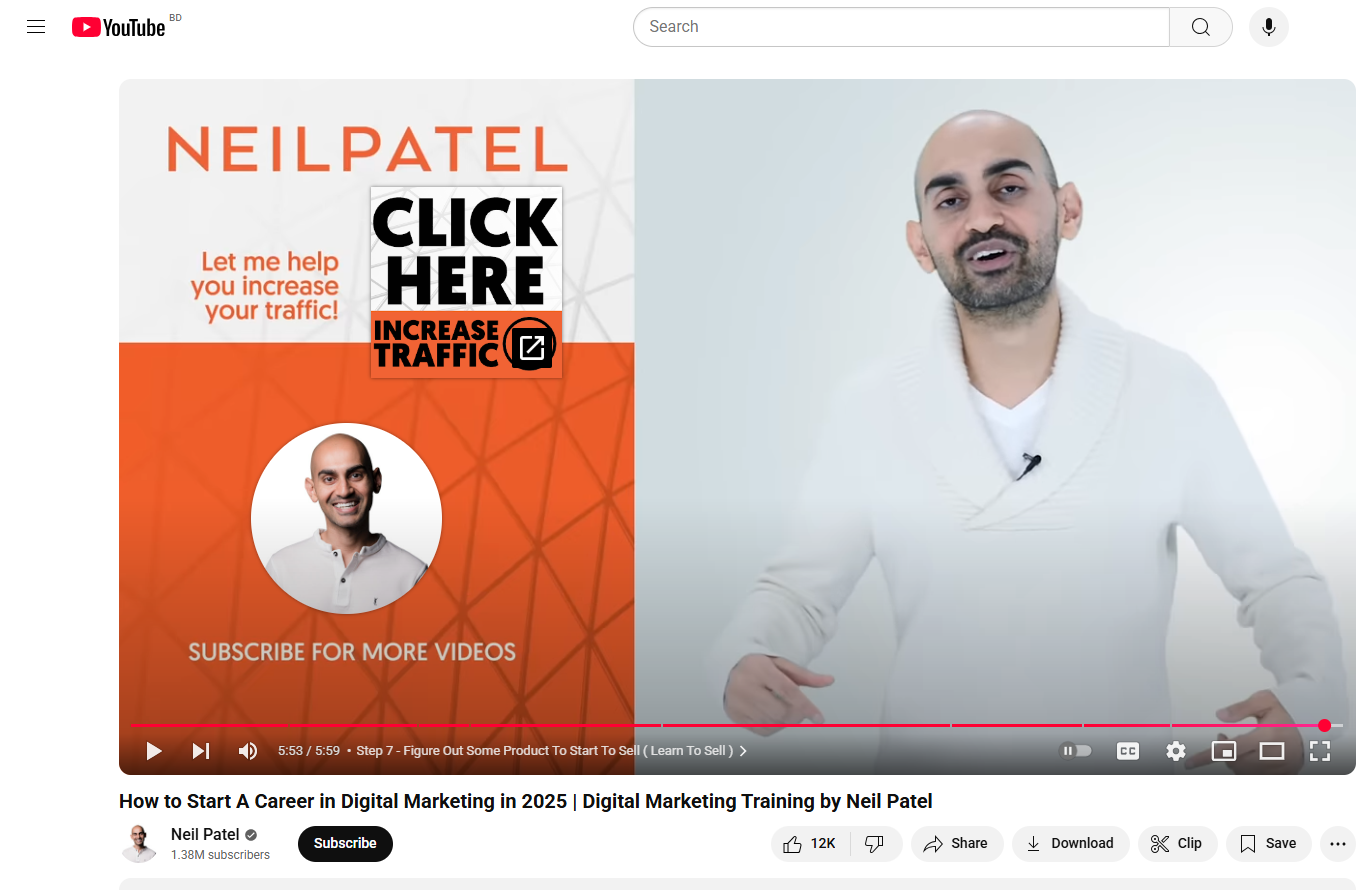
Tell your viewers what to do next. Ask them to subscribe, download a freebie, visit your website, or sign up for your online course.
Tips for a Strong CTA:
Start with an action word (Join, Buy, Get).
Add enthusiasm.
Offer an incentive (bonus, freebie, or discount).
Create urgency (Limited spots, Offer ends soon).
12. Make an Irresistible Offer
People love deals. Run limited-time offers for your course. You can offer exclusive discounts for new sign-ups. You can also sell unique products on YouTube, like digital downloads or merchandise, that aren't available elsewhere.
13. Post Content Consistently
Your channel will grow naturally with regular video uploads. YouTube favors active creators and ranks them higher in search results.
Viewers also appreciate knowing when to expect new content. Plan your content in advance. Keep extra videos ready, so you never run out of ideas.
14. Go Live and Engage
Live videos increase engagement. Host short sessions, Q&As, or master classes. Ask your audience what they want to learn next.
Streaming on YouTube and Facebook at the same time can help you reach more people. Use live sessions for audience research and build stronger connections.
15. Share Testimonials
People trust real experiences. Showcase testimonials in video format for more impact. Ask past students to share their success stories live or in recorded videos.
Keep it natural. Ask simple questions like, "What did you learn?" or "How did this course help you?" A real conversation is more convincing than written reviews.
16. Improve Your Channel Appearance
A well-branded channel looks professional. Use your logo, colors, and a clear tagline that describes what you do.
Write a short, compelling About section. You must organize your online course videos into playlists so viewers can easily find what interests them.
17. Build an Engaged Community
A strong community increases loyalty. Reply to comments, even negative ones, without arguments. Livestreams help you understand what your audience likes.
YouTube is different from a course forum. Expect conversations to go beyond your topic. This helps you learn more about your audience's interests.
Bonus Tips:
If you’ve ever dreamed of growing a successful YouTube channel but don’t know where to start, Ali Abdaal’s Part-Time YouTuber Academy might be just what you need. Built by one of YouTube’s most thoughtful creators, the course breaks down everything he’s learned from scaling his channel to 4M+ subscribers—without the overwhelm or burnout. Whether you're a beginner or looking to level up, it's a solid launchpad.
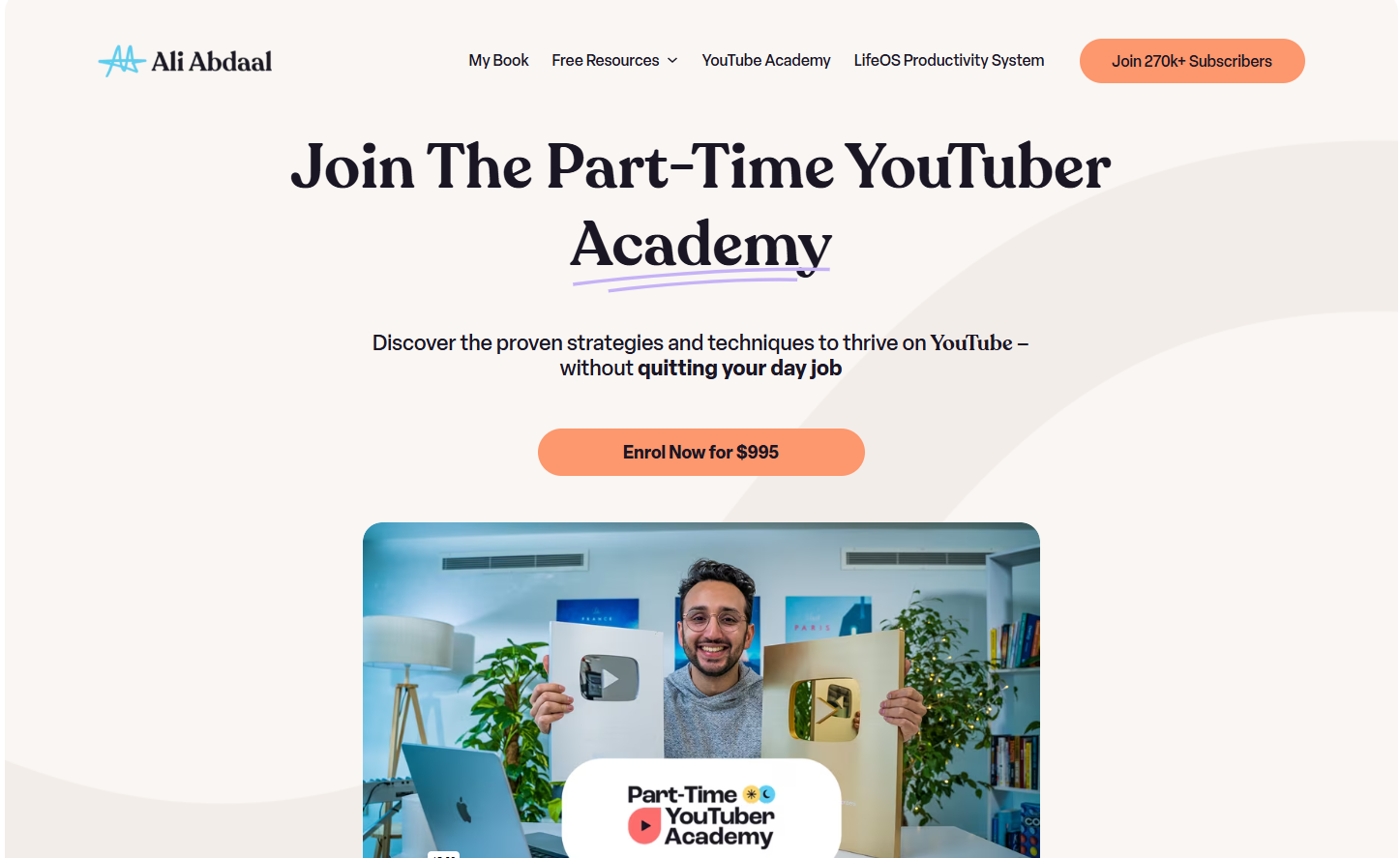
Frequently Asked Questions
Are you allowed to sell on YouTube?
Yes, YouTube lets approved creators sell products. You can connect your store and show your items in videos. You can also tag products from other brands.
How can I make money on YouTube?
YouTube pays in different ways:
Ads – Earn money when people watch ads on your videos.
Shopping – Sell your own products or promote items from other brands.
What is an example of a YouTube tag?
Tags help people find your videos. If your video is about baking cookies, good tags are "chocolate chip cookies" or "easy cookie recipe."
Final Note
YouTube is a priceless tool for selling your online courses. We clearly explained in this guide how to sell on YouTube. YouTube grows your brand recognition and allows you to sell courses directly to viewers.
You should focus on your ideal market with targeted keywords. Post valuable content on a consistent schedule. This will help you expand your channel and attract more visitors to your site.
Then, use YouTube analytics to measure your results and see what resonates. Keep tracking your sales and stats. If something underperforms, update your approach. Stay aware of what's working best, and keep refining your content.

